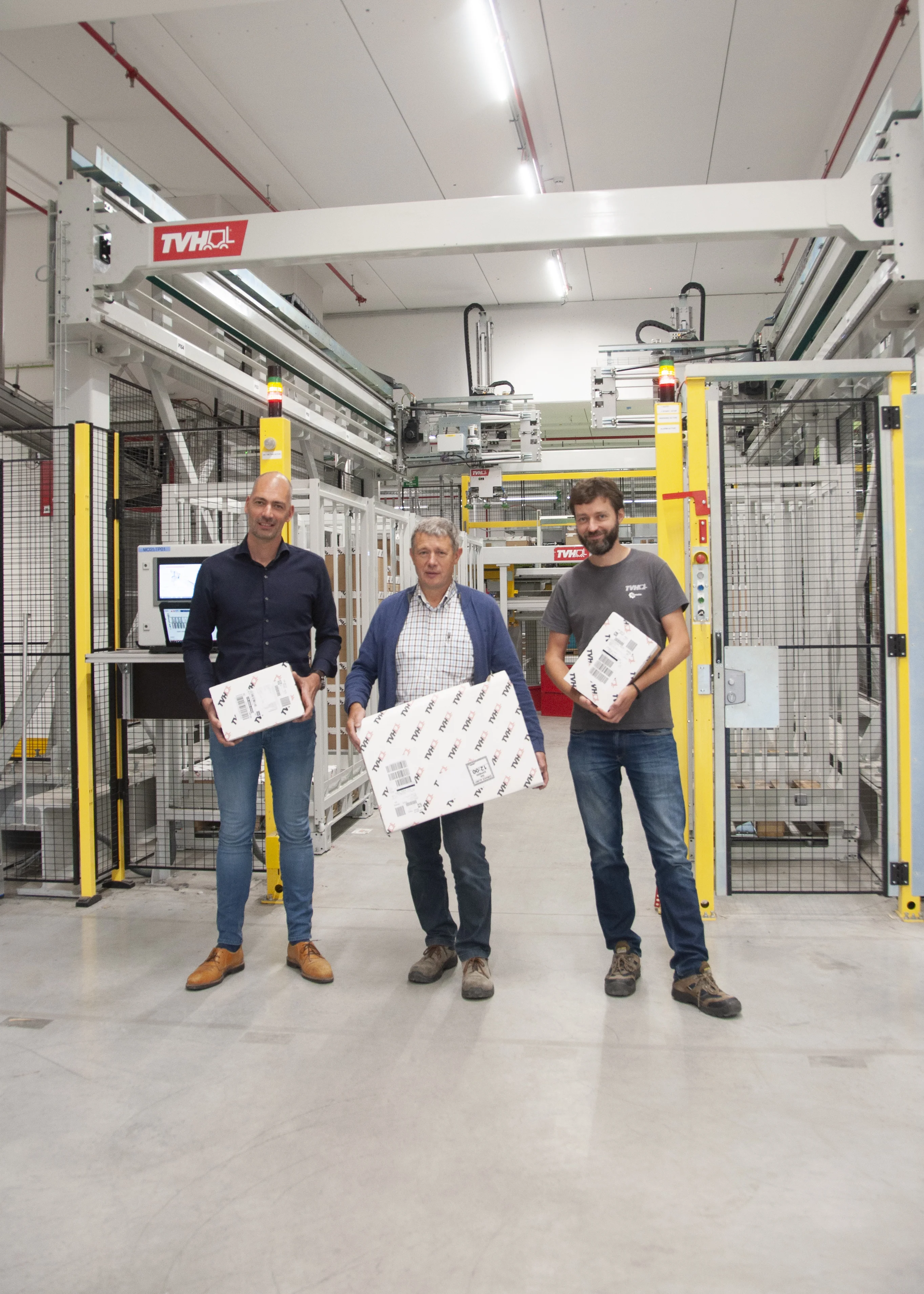THE REASON FOR AUTOMATION
TVH is growing strongly and the logistics department became too small. That is why the company decided to build a new warehouse next to the main building.
"Initially, we were going to load the boxes directly into the trucks using a telescopic conveyor, but that turned out to be unfeasible: with a target of processing 2,500 boxes per hour – and in the second phase 5,000 boxes - this is ergonomically unjustifiable. We decided to automate the handling process”, says Erik Deceuninck, director automation at TVH.

